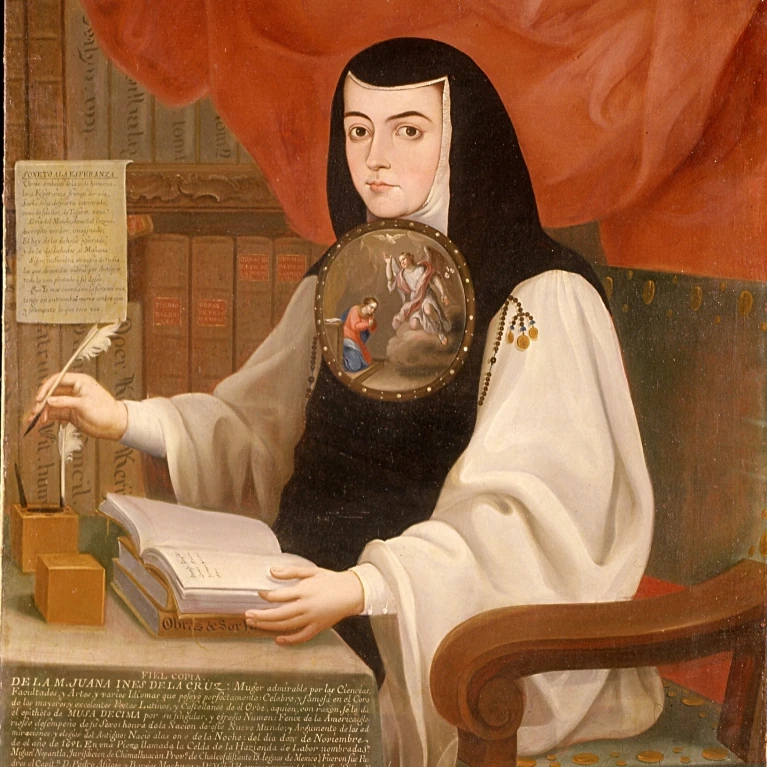Sor Juana: el Primer sueño, el poder político y el flujo anti-imperialista de sus esferas
(pp. 117-133; DOI: 10.23692/iMex.15.9)
 Loading...
Loading...Prof. Dr. Patricia Saldarriaga
Patricia Saldarriaga is a Professor of Spanish in the Department of Spanish and Portuguese of Middlebury College. She is also a faculty member of the School of Spanish/Middlebury College where she teaches literary and cinematic analysis as well as cultural and literary theory at graduate level. Her main field is the transatlantic Baroque as well as contemporary poetry. She is currently working on two research projects: Apocalyptic cinema in the American continent (with Emy Manini), and the use of spheres in Imperial rhetoric in literature and art of the Baroque. Among her newest publications: Venas Negras. La poética de Rocío Silva Santisteban (Saldarriaga, Castañeda, Lengua, eds., 2018), “El lagar mísitco como metáfora de la colonialidad” (Magallánica, 2018), “La engañosa vanitas en Este que ves… de Sor Juana Inés de la Cruz (Romance Notes, 2018), “Spheres and Empire: Religious Discourse in the Hispanic Enlightenment” (ECTI, 2018), as well as “Pornifying Don Quixote: A Quest for Seminal Adventures,” In: Reimagining Don Quixote. (Film, Image and Mind), 2017. She is a member of the following research groups: UC Mexicanistas, “En los bordes del archivo, escrituras periféricas, escrituras efímeras en los virreinatos de indias” as well as “De las palabras a los hechos: manifestaciones violentas del antiamericanismo desde la Guerra Fría hasta los albores de la era Trump.”
Con el auge de la imprenta en el siglo XVII se desarrolló un movimiento llamado “teorías de la tierra” bajo el cual se publicaron diversas representaciones visuales de la misma como globo terrestre. Estas impresiones produjeron importantes debates interdisciplinarios. Magruder afirma que las representaciones más importantes se hicieron en forma de secciones y visiones globales. Sor Juana contribuye a estas teorías de la tierra a través de su poesía. La jerónima responde a la retórica imperial en la que la figura geométrica de la esfera se utiliza para representar el poder político, religioso y epistemológico y finalmente produce una crítica al imperio. Especialmente en el Primero sueño el alma humana se eleva hacia las alturas para obtener una mirada global y en ese intento epistemológico pretende medir las dimensiones de la tierra, actividad científica que contrapone a la mitología o a las creencias religiosas. Al tratar de establecer las medidas correctas de la circunferencia se adelanta así a los esfuerzos de la expedición geodésica del siglo XVIII bajo cuya empresa se logró medir el arco del meridiano.
The printing revolution of the 17th century made possible the development of the “Theories of the Earth”, an interdisciplinary set of publications that included different visual representations of the earth as a globe, as well as debates and dialogues regarding its shape. Magruder states that global sections (a type of wedge) and global views (only showing the surface) were the two most common ways to represent the earth. Sor Juana contributes to the so called “theories of the earth” throughout her poetry. In the First Dream, the human soul elevates itself to the heights, and obtains a global vision of the earth (a thought exercise dating back to Plato). During that epistemological search, the human soul tries to measure the circumference of the earth. The scientific activity of measurement is sharply contrasted with narratives of mythology and religion. Sor Juana responds to imperial rhetoric that uses the geometrical form of the sphere to represent political, religious and epistemological power, and criticizes the Empire. By trying to establish the correct dimensions of the earth, she presages the efforts by the geodesic expedition of the 19th century.
Claudia Jünke / Jutta Weiser - Editorial
Sara Poot Herrera – Documentos alrededor de Sor Juana
Beatriz Colombi – Figuraciones del mecenazgo y la autoría
Francisco Ramírez Santacruz – Las riquezas del Nuevo Mundo y el ingenio indiano
Jutta Weiser – Discurso criollo y autoría implicita
Claudia Jünke – Identificación y diferencia cultural
Agnieszka Komorowska – Construyendo el espacio teatral criollo
Verónica Grossi – La transformación del código petrarquista
Patricia Saldarriaga – La geometrización del poder
Kurt Hahn – La marginalidad puesta en el centro
Reviews



